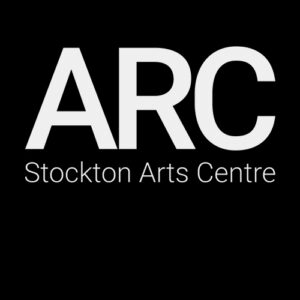
Last week Arts Council England published their latest diversity report, with statistics about the make-up of the workforce across National Portfolio Organisations (NPOs) as well as the Creative Case for Diversity ratings.
It’s fantastic to see ARC’s work in this area recognised with an Outstanding rating – just 5% of NPOs achieved this.
Ensuring your programme – and audiences and workforce, although these currently fall outside of the Creative Case – is representative of today’s society is a process. A process of changing the way we work as organisations.
That’s been key for us at ARC, in all the work we do around engagement – whether it’s about engaging different artists to work with us, or new audiences, or recruiting staff. For too long I believe the arts sector approached engagement in a way that expected the people we were trying to reach to change their behaviour. In fact, it’s the complete opposite. We have to change ours.
In 2015, we started working with Vici Wreford-Sinnott, a disabled writer and director, to develop Cultural Shift, a three year disabled-led programme designed to ‘shift’ us as an organisation. We worked together to embed disability equality across the organisation – supporting disabled artists, increasing opportunities for disabled people to experience and take part in arts activity, and changing the organisation to ensure we were more welcoming to disabled people in all aspects of our work.
You can read a summary of the project here.
Vici gave us the confidence to ask questions, to work through our concerns about ‘getting it wrong’ and helped connect us to a community of disabled people – artists, participants and audiences – that continues to grow.
This artist-led approach became a model of how we worked, and helped us reach out and engage other communities. We’ve worked closely with Curious to develop our relationship with LGBTQIA communities, and with Slate and our Associate Artist Umar Butt, to develop relationships with Black and Asian communities. Our newest partnership is with COMMON Theatre, to explore how we can achieve greater socio-economic diversity.
Our programme is all the richer for it, but so are we. We get to experience first-hand the voices and stories of the amazing artists we work with, and to share those with our audiences.
It’s always rewarding when your work is acknowledged, but it’s not about what your Creative Case rating is – it’s about whether you are genuinely committed to changing how you behave. It’s also not a competition – in an ideal world, all 841 of NPOs would be Outstanding.
And just because our work has been recognised doesn’t mean we can stop. As I said, it’s a process and we know we have still got lots more to do.
What are your Themes for 2020?
Embracing Disruption to Your Daily Routine


Annabel Turpin is currently Chief Executive & Artistic Director of ARC, a charity that uses arts and cultural activity to strengthen its local community. It works locally, in Stockton and the Tees Valley, and nationally, through leadership of networks and partnerships. ARC presents a year round programme of arts and cultural activity including live events, film screenings, workshops and classes, and works to ensure it engages people who might be socially excluded. Annabel is a board member of Tees Valley Local Enterprise Partnership, Sunderland Culture Company and the North East Culture Partnership, where she has helped develop the region’s Case for Culture strategy. She co-chairs Future Arts Centres, a national network of more than 100 UK arts centres, committed to championing the role of arts centres within the wider cultural and community sector. She launched and chairs Venues North, a group of 35+ venues from across the greater North committed to helping performing artists get their work seen more widely, and also chairs the North East Artist Development Network. As a freelance consultant, she has undertaken work around organisational development for a range of clients, including companies, venues and local authorities, as well as mentoring and facilitation at both executive and board level.
Read Full Profile© 2021 TheatreArtLife. All rights reserved.

Thank you so much for reading, but you have now reached your free article limit for this month.
Our contributors are currently writing more articles for you to enjoy.
To keep reading, all you have to do is become a subscriber and then you can read unlimited articles anytime.
Your investment will help us continue to ignite connections across the globe in live entertainment and build this community for industry professionals.